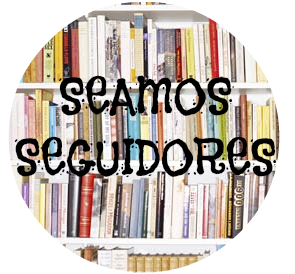On May 8th we had an amazing opportunity to talk before our monthly meeting to Gerard de Jong, current resident of the programme Other Words in the Basque Country. You might remember we had previously hosted Bart Kingma in November (https://donostiabookclub.blogspot.com.es/2016/11/meeting-with-bart-kingma-november.html?q=other+words) and the results of his stay in San Sebastian are already available on the Other Words website (http://otherwordsliterature.eu/uploads/work/sera.pdf), for now only in Frisian, but we are hoping to read it soon in English too!
It was Gerard's first public event and we certainly hope he felt our interest and hunger for knowledge. Below you can find some main points from the presentation he had prepared for us (all the descriptions and pictures come from Gerard's original presentation, so all the credit for this post, in reality should go to him!)
"Het Bildt used to be part of the Middle Sea. In 1505, some 1500 men were put to work to make land from the sea. They would first build a 14 km long dike, after which they could start ‘poldering’ in the land. This work was all done with mere shovels and wheelbarrows. Because it was terra nova, ‘new land’, there was nothing there at first. Most of the workers – coming from both the South of Holland and from Friesland – decided to stay on what would be called ‘het Bildt’: meaning ‘silted up land’."
"In honour of their hard work, this statue was placed at the sea dike. It’s called ‘De Slikwerker’, ‘the Mud worker’, as a tribute to those who worked very hard (and were very poorly paid) to create this new ‘enclave’."
Gerard brought and showed us a replica of that statue, given to him by his parents as a 'lucky charm'.
"Het Bildt is renowned for its agriculture. For centuries it was considered the ‘grain shed of the world’. The mixture of highly fertile clay land and the salty sea breeze makes het Bildt a perfect place for potatoes. Some 10% of all the seed potatoes in the world come from het Bildt."
"Het Bildt was the first ‘modern’ polder, with its characteristics being straight lines, like a grid, or a Mondriaan painting. The landscape mirrors the Bildts way of thinking and attitude: straight, very open, very direct. Het Bildt also has an unusually high number of artists, writers and poets: many of them come the West (Amsterdam) and find inspiration in the huge skies, the sea and the silence. In the 18th and 19th century Frisians referred to het Bildt as ‘Sodoma and Gomorrah’. It was considered a ‘rough’ area: it was rather poor, there were lots of people working in fishing and farming. In the Netherlands, het Bildt was one of the first places were the early 20th century socialist revolution had a lot of the workers enthused."
After that explanation, came the part of the presentation much more personal, but at the same time fascinating and directly connected to the project that Gerard is working on during his stay with Other Words.
"In 1935, my great-grandfather started de Bildtse Post, a newspaper. During World War II he refused to place Nazi propaganda, which lead to the paper being cut off from electricity, ink and paper. It was only after the liberation when the paper could appear again. On the left in the image above is the first post-war paper, opening in English with a ‘welcome to our liberators’."
"He ran de Bildtse Post from after the war until his death in 2000. I, 21 and studying journalism at the time, dropped out of university to take over the paper. I was the youngest editor-in-chief of the Netherlands at that point.
At the time we have about 1800 subscribers to our paper. We use a lot of Bildts language, and are the only newspaper where people from het Bildt (‘Bilkerts’) can read and write in their language. We consider the Bildtse Post to be an essential instrument in keeping the language – with only 6000 speakers – alive."
"For this, in 2015 we received the Bildtse-Kultuurpriis, a prize acknowledging our role in the preservation of the language. As you can see my father (left) and I were very pleased with that!"
Since his family story is so fascinating, it shouldn't surprise anyone that some elements of it might appear in a novella he is planning to write while in Donostia. The story will be written in the Bildt language and it's title is ‘Blau fan dagen, griis fan onrust’ (Blue of days, grey of anxiety). Gerard has lots of experience in journalism, but that will be his literary debut. He plans to focus on three generations of inhabitants of Het Bildt and paint through their eyes a historical story about the Bildt awareness.
As we can read on Other Words website, the plan is quite ambitious. He says:
"With my literary novella I hope to achieve something; to acknowledge and to anchor the Bildt language as a language for literature. To show that it is possible to put the spade in new ground and gain terrain like a literary mud worker: fertile soil on which growing can be continued. It is my personal mission and guiding force in life. The literary stay in San Sebastian is a unique, ‘once in a lifetime’ opportunity to realize this dream."
 |
| Gerard de Jong, picture taken from: http://otherwordsliterature.eu/eng/writers/ |
It was Gerard's first public event and we certainly hope he felt our interest and hunger for knowledge. Below you can find some main points from the presentation he had prepared for us (all the descriptions and pictures come from Gerard's original presentation, so all the credit for this post, in reality should go to him!)
Gerard brought and showed us a replica of that statue, given to him by his parents as a 'lucky charm'.
 |
| picture taken from: http://otherwordsliterature.eu/eng/blog/gerard_de_jong_s_first_public_event_in_donostia |
"Het Bildt is renowned for its agriculture. For centuries it was considered the ‘grain shed of the world’. The mixture of highly fertile clay land and the salty sea breeze makes het Bildt a perfect place for potatoes. Some 10% of all the seed potatoes in the world come from het Bildt."
"Het Bildt was the first ‘modern’ polder, with its characteristics being straight lines, like a grid, or a Mondriaan painting. The landscape mirrors the Bildts way of thinking and attitude: straight, very open, very direct. Het Bildt also has an unusually high number of artists, writers and poets: many of them come the West (Amsterdam) and find inspiration in the huge skies, the sea and the silence. In the 18th and 19th century Frisians referred to het Bildt as ‘Sodoma and Gomorrah’. It was considered a ‘rough’ area: it was rather poor, there were lots of people working in fishing and farming. In the Netherlands, het Bildt was one of the first places were the early 20th century socialist revolution had a lot of the workers enthused."
After that explanation, came the part of the presentation much more personal, but at the same time fascinating and directly connected to the project that Gerard is working on during his stay with Other Words.
"In 1935, my great-grandfather started de Bildtse Post, a newspaper. During World War II he refused to place Nazi propaganda, which lead to the paper being cut off from electricity, ink and paper. It was only after the liberation when the paper could appear again. On the left in the image above is the first post-war paper, opening in English with a ‘welcome to our liberators’."
 |
| Gerard's grandfather, Gerryt Dirks, with the paper. |
"He ran de Bildtse Post from after the war until his death in 2000. I, 21 and studying journalism at the time, dropped out of university to take over the paper. I was the youngest editor-in-chief of the Netherlands at that point.
At the time we have about 1800 subscribers to our paper. We use a lot of Bildts language, and are the only newspaper where people from het Bildt (‘Bilkerts’) can read and write in their language. We consider the Bildtse Post to be an essential instrument in keeping the language – with only 6000 speakers – alive."
"For this, in 2015 we received the Bildtse-Kultuurpriis, a prize acknowledging our role in the preservation of the language. As you can see my father (left) and I were very pleased with that!"
Since his family story is so fascinating, it shouldn't surprise anyone that some elements of it might appear in a novella he is planning to write while in Donostia. The story will be written in the Bildt language and it's title is ‘Blau fan dagen, griis fan onrust’ (Blue of days, grey of anxiety). Gerard has lots of experience in journalism, but that will be his literary debut. He plans to focus on three generations of inhabitants of Het Bildt and paint through their eyes a historical story about the Bildt awareness.
As we can read on Other Words website, the plan is quite ambitious. He says:
"With my literary novella I hope to achieve something; to acknowledge and to anchor the Bildt language as a language for literature. To show that it is possible to put the spade in new ground and gain terrain like a literary mud worker: fertile soil on which growing can be continued. It is my personal mission and guiding force in life. The literary stay in San Sebastian is a unique, ‘once in a lifetime’ opportunity to realize this dream."
One of the questions that fascinates de Jong is "How can we use literature to give a minor language (that is threatened by extinction) like the Bildt language with only 6,000 speakers, a chance to survive, to make it stronger. To create a foundation from which this language can experience a new spring and face a solid future."
We hope he will succeed and that his stay in the Basque Country will be the most fruitful one! Good luck Gerard!
















Comentarios
Publicar un comentario